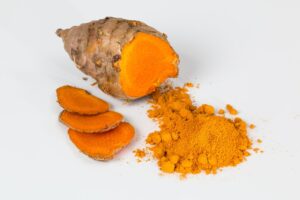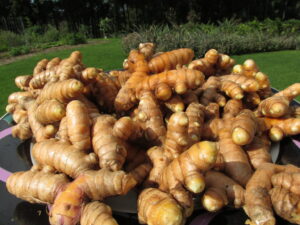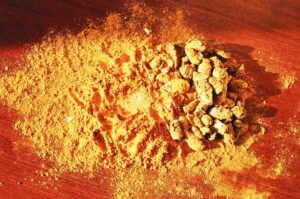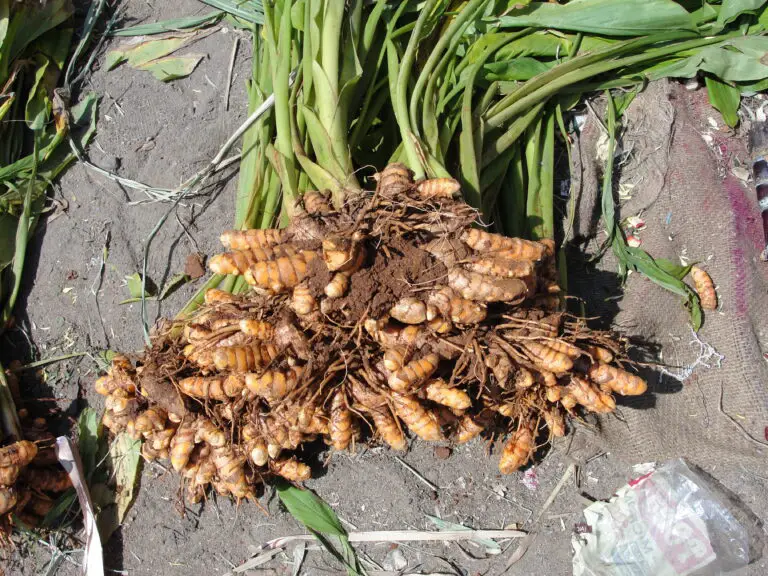Dive into the world of turmeric, the vibrant, golden spice that has been used for centuries in cooking and traditional medicine. In this blog post, we answer the question: “Where is turmeric grown?” and delve into aspects of fresh turmeric, turmeric powder, and curcuma longa turmeric.
Understanding Turmeric

Turmeric, also known as Indian saffron, hails from the Curcuma longa plant, a tropical plant and perennial herb from the ginger family. This wonder spice is widely cultivated around the globe for its rhizomes, the underground stems of the plant. The golden glow of the turmeric rhizome is dried and ground to create the turmeric powder we often find in our kitchen cupboards.
Turmeric has been used in Ayurvedic medicine for over 4,000 years due to its powerful anti-inflammatory properties, providing relief for conditions like rheumatoid arthritis and chronic inflammatory diseases. The curcumin present in the spice is also known for helping to regulate blood pressure and managing liver disorders.
From lending a golden color to curry powder, to being a prime ingredient in golden milk, to serving as a bright yellow dye, turmeric’s uses are plentiful. The essential oil derived from turmeric has been used in aromatherapy, while fresh turmeric root is often used alongside fresh ginger in a variety of sweet dishes and canned beverages.
Historical Origin of Turmeric

Originally, turmeric was cultivated in South Asia, over 4000 years ago. Ancient records from India, where more than 75% of the global turmeric supply originates, indicate that turmeric was used in cooking, as an aesthetic ground, and an integral item in religious rituals. Hence, the question of “Where is turmeric grown?” often begins with – India.
The ideal soil and mild climate conditions in India have allowed the turmeric plant to flourish. One unique characteristic of the turmeric plant is the leaf sheath. This part of the plant envelops the leaf blade and the false stem and is a crucial element in the plant’s growth. Indian cuisine has embraced turmeric and is rarely seen without the inclusion of this golden spice, enhancing the flavor of boiled white rice and many more dishes.
Top Producers of Turmeric
India is the leading producer of turmeric, followed by other countries such as Bangladesh, Pakistan, and Thailand where the bright yellow spice is widely grown. In fact, “India produces” is a phrase commonly tied to turmeric, indicating the country’s dominance in the global turmeric market.
Curcuma Longa or turmeric thrives in a warm climate with adequate rainfall, making these countries the ideal place to plant turmeric.
Ideal Conditions to Grow Turmeric

Turmeric plants prefer warm temperatures (20-30 degree Celsius) and a considerable amount of rainfall throughout the year. A well-drained soil rich in organic matter is ideal for turmeric, and mature turmeric rhizomes are typically planted in early spring. Peat moss can be incorporated into the soil to improve drainage and avoid rhizome rot.
The rhizomes are then buried two inches deep in the soil, with the buds facing upwards. Growing turmeric also requires a sunny location with afternoon shade, because while the plant loves sunlight, it can get damaged by the hot afternoon sun.
Care should be taken to avoid planting turmeric in overly wet or soggy soil, as this can lead to diseases like dry rot and unpleasant conditions such as rhizome rot. Hence an ideal soil with adequate drainage is important while growing turmeric.
Harvesting and Processing of Turmeric
Harvesting turmeric typically occurs nine to ten months after planting. The dry, withered look of the leaves indicates that harvesting time has arrived. The rhizomes are pulled out from the soil, cleaned, and boiled before they are dried in the sun for about a week.
The sun-dried rhizomes are then polished using alkaline solutions or lead chromate to enhance their golden color. They are finally ground into the familiar turmeric powder or used for extracting turmeric extracts. The byproduct of this process, the dried turmeric leaves, are often used in certain dishes for their distinct flavor.
Where Is Turmeric Grown?
Where is turmeric grown? Today, this golden spice is grown in various tropical regions, from South Asia to Central America. The journey from the underground stem to the powdered spice found in kitchen cupboards involves a meticulous process of growing, harvesting, and processing. Turmeric, whether its organic turmeric, fresh turmeric, or ground turmeric, has become a crucial part of our lives, in both culinary and medicinal terms.
So next time when you stir some turmeric powder in your ginger-orange juice or sprinkle it over your curry, remember the long journey this golden spice has undergone, and perhaps even consider growing your own turmeric plant!

